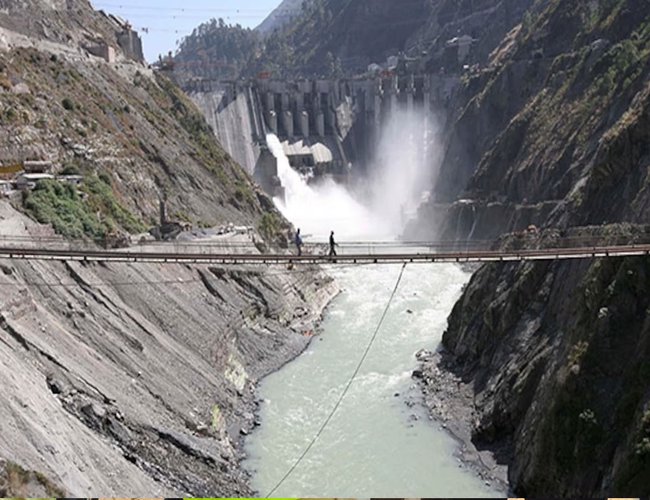
In the quest of augmenting its industrial productivity and attaining its actual economic potential, Nepal remains on the path of continued hydropower development and it has already acquired a surplus power capacity. As per the Economic Survey of 2021-22 of the Ministry of Finance, Government of Nepal (GoN), the installed capacity of Nepal reached 2205 MW in mid-March 2022. The peak power demand in June 2022 was recorded as 1,747.50 MW. As per the Department of Electricity Development of the GoN, Nepal has granted a feasibility license for 228 projects, with a total capacity of 16,415.40 MW, to different companies for performing a feasibility study of project development. Likewise, 217 projects with a total capacity of 8,306.50 MW have been granted ‘Generation License’ for actual project development. Nepal’s generation capacity is expected to reach 7,300 MW by 2025. It will be in a surplus of more than 4,000 MW.
Nepal’s power export market and the need for Indian currency
In all likelihood, Nepal’s enhanced power capacity will equip it better to use the surplus power at home turf and also supply most conveniently to India. For greater reliance on surplus power, domestic use in Nepal should give a way to increased use of electrical appliances for household and industrial needs. Also, mobility solutions should come through this. With a balanced transition to clean energy (here it is hydroelectricity), it would have a long-term benefit in making the surplus power truly productive besides lowering the import of petroleum products. As a country gripping with a severe balance of payment and liquidity crisis, Nepal has a good reason to explore the potential where it is firmly rooted.
Looking from another perspective, it is essential to note that India remains the biggest market of power for Nepal. It has institutional and infrastructure arrangements already in place with Nepal for cross-border power exchange/trade between the two countries. India is also Nepal’s biggest trading partner. Nepal has a huge trade deficit with India. For the first eleven months of the fiscal year 2020-21, the volume of bilateral trade between India and Nepal was Rs 610.49 billion, out of which imports from India to Nepal were Rs 554.12 billion and exports to India from Nepal stood at Rs 56.37 billion. Nepal requires Indian rupees more than any other currency for trade. And for that matter, cross-border power export may prove pivotal in improving the trade balance besides earning the much-needed Indian currency.
For positively changing the industrial landscape and strengthening Nepal’s stake in the India-Nepal bilateral economic ecosystem, there is a glaring need for re-energising the energy partnership between the two countries. The foregone opportunities should be kept in reference for learning instead as irritants, the success stories should continue to inspire partnership—and there should be a resolve to tap the vast potential Nepal has with hydroelectricity.
India’s growing energy requirements
India needs power not only to sustain its economic growth and future growth developmental aspirations but also to ensure the general welfare of its citizens. As per the World Economic Forum (WEF), India’s total energy consumption is expected to more than double by 2040 from what it was in 2020. The installed capacity of 410 GW as of 31 December 2022, though makes India the third-largest producer (and also consumer) of electricity in the world, it is not sufficient to achieve the economic growth that it aspires through such programs as ‘Make in India’, ‘Skilling India’, ‘Digital India’ and many more. Sufficiency of power remains paramount for achieving growth.
It is imperative to reckon that India just does not need more energy, it needs clean energy. As India is heading towards an energy transition, Nepal has a big opportunity to increase its bandwidth of supplying clean hydroelectricity through the grids of India’s neighbouring states like Bihar and Uttar Pradesh. To make it successfully happen, Nepal has to keep its pricing strategy truly competitive and that should match or beat the other options India has at the energy front.
At 174.53 GW, India is the fourth-largest country in the world in installed renewable energy capacity. With the growing clamour for sustainable development, this is something very important. India has set an ambitious goal of achieving 5,00GW of renewable capacity by 2030 and plans to invest Rs 2.44 trillion by 2030. Achieving 500GW requires stepping up the renewable capacity addition by three times its present value each year till 2030. It is a huge investment. Also, in light of the pressing need for investments in other important sectors of society and economy.
Hydropower provides a clean, reliable, efficient, safe, and inexpensive source of power. It can also help to mitigate climate change. It is the power that the world needs not only to meet its deficient energy needs but also for its net zero commitments.
Importance of India’s partnership for enhancing Nepal’s hydropower development
India’s gains in importing power from Nepal:
-Help to avoid making too much capital investments too quickly in its power sector amidst pressures to invest equally from other competing sectors such as education, health etc. that also need strong investments
-Provide immediate access to clean power to maintain/propel its economic growth
-Reduce pressures on its foreign currency reserves and exchange risks from having to either import electricity from a country that accepts only hard foreign currency or spend the money for importing equipment for its own project development
-Time gain: immediate access to power vs. time spent on developing the power project and utilizing the power
-Meet its international commitments on renewable energy under Climate and Net Zero
-Rightly claim a leadership position in different important world platforms on Climate and NetZ
-Strengthen its policy of internationalizing the INR
Nepal’s gains in exporting power to India
-receive the much-needed boost in its economy.
-Meet its age-held power export aspirations to India.
-Strengthens bilateral relations.
-Helps to bridge the huge trade gap of Nepal with India
-INR earning from electricity trade also help in strengthening its own foreign currency savings as Nepal currently sells its foreign currency to buy Indian currency
By exporting power to India, Nepal will be greatly benefitted from bridging the huge trade gap between Nepal and India and enhancing bilateral economic partnership. With such promising prospects, India and Nepal should come forward for an ever closer cooperation for hydropower development and catalysing the fundamentals critically important for a transformative outcome. At policy and implementation level, this calls for deeper attention from the stakeholders on both sides. Going forward, initiatives and reciprocations can script a new chapter in India-Nepal relations.
Atul K Thakur is a policy professional, columnist and writer with a special focus on South Asia. Deepak Rauniar is an energy expert from Nepal. For research support, the authors acknowledge the contributions of Neeru Sharma. The views expressed are personal.

















